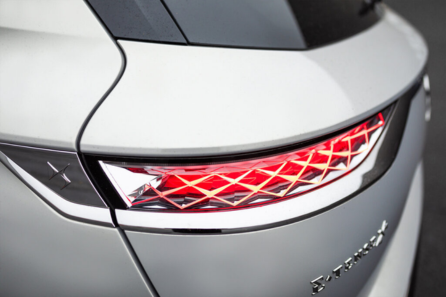Design trends have been reflected for decades in every make and model of car, and this is certainly true in the production of taillights. Thanks to 3D laser decoating, ideas can be constantly improved and taken to the next level. As a specialist in laser systems and optical analysis for industry, LASCAM has been developing this technology for a long time. While implementing a project for the world’s leading manufacturer of automotive lights, it used innovative 3D decoating.
Unique taillight appearance thanks to laser decoating
Laser decoating, or the 3D selective removal of layers, is a modern laser technology enabling the removal of a plated layer to the nearest hundredth of a millimetre, therefore having a very low impact on the base material. This process preserves all the optical characteristics of the taillight, while reducing the cost and duration of production. The final effect when turning on the light is absolutely unique.
Fully automated workstation
The aim of the project was to create a robotic workstation where, without any need for operator intervention, the design structures on taillights would be created using lasers instead of the existing masking technology. For this purpose, we designed and installed a fully automated compact laser cell with final optical analysis using deep learning and the separation of OK/NOK parts with full connection to the parent production system.
The core consists of a 6-axis industrial robot that picks up a part from a pallet and moves it under a static laser head. The laser then removes a thin metal layer from the plated plastic parts in exactly 98 defined areas with a repeatable accuracy of ±0.03 mm. The laser process is tuned to avoid any thermal impact or damage to the underlying material and thus to maintain all the required optical characteristics of the part.
Subsequently, the surfaces are illuminated and a deep learning camera system mounted on the robot performs a 100% optical quality inspection. Before handing over the finished part for assembly, the product is additionally blown with ionised air to remove the static charge from the surface of the treated layer.
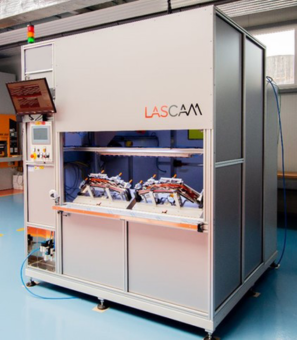
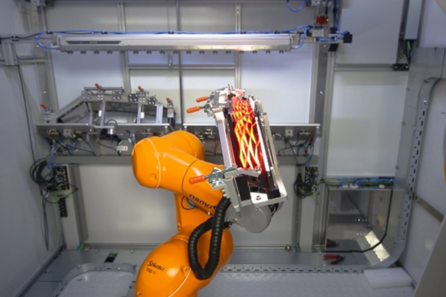
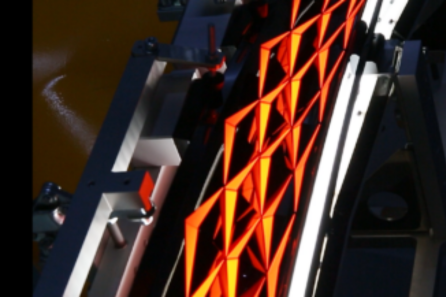
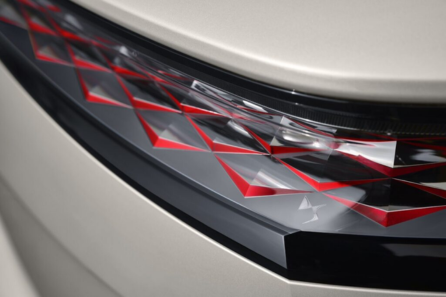
Main benefits
Thanks to this unique laser technology, the customer is able to implement such design patterns on the taillight that were not possible with masking technology. At the same time, the entire process has been greatly accelerated (down from 340 s to 110 s), while maintaining the required quality and accuracy to hundredths of a millimetre over areas up to 900×680 mm2. Furthermore, the implemented technology is waste-free, saving the customer the additional costs of waste management. Also, the large reduction in carbon footprint and CO2 emissions per part produced is a significant benefit (nowadays these emissions are a very closely monitored production parameter).
Features and benefits of the solution
- Creating original design structures that could not be implemented with existing technologies
- Removing plated layers from high-contrast plastic parts without the need for masking
- Reducing the number of NOK parts produced by the poor implementation of masking products
- Achieving high-quality layer removal without any temperature impact and damage to the base material
- Accuracy of the complete laser machining process to hundredths of a millimetre in areas up to 900×680 mm2
- Reduction of CO2 emissions and energy consumption, leading to CO2 neutrality
- Significant acceleration of the entire process from 340 s down to 110 s
